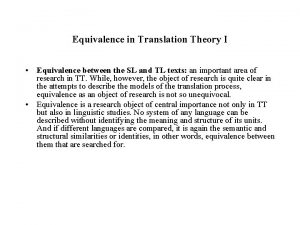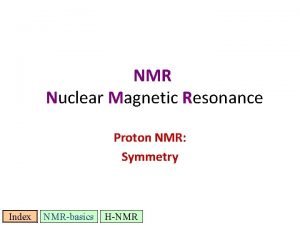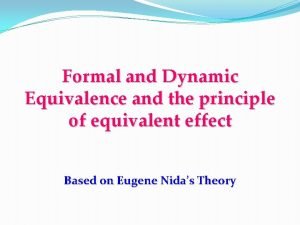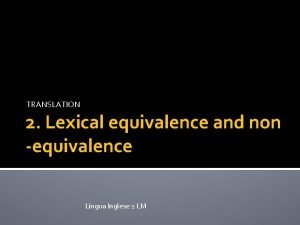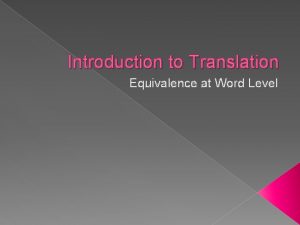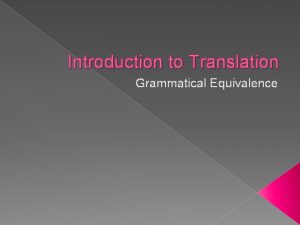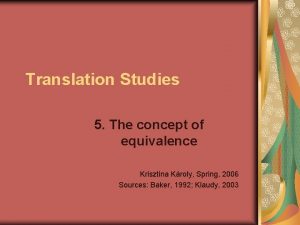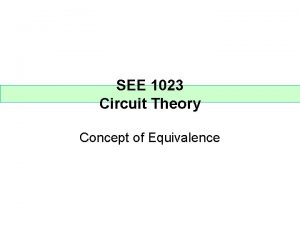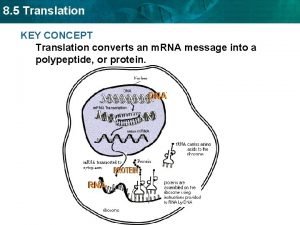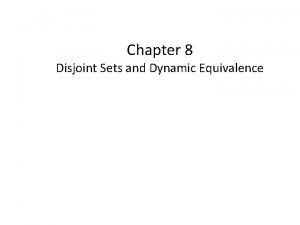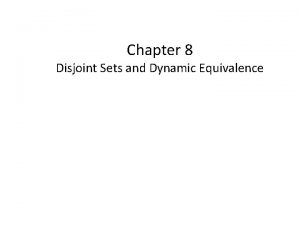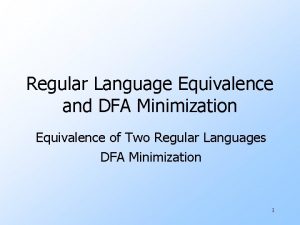Equivalence in Translation A key concept in translation















- Slides: 15

Equivalence in Translation A key concept in translation§ Equivalence centers around § the processes interacting between the original source text and translated text.

Types of Equivalence (1) Referential equivalence is established when the words in the source language (SL) refer to the same objects in the world as the words in the target language (TL) . g. book and in English refers. ﻛﺘﺎﺏ e (2) Connotative equivalence is established when the words in both languages and texts trigger the same associations and connotations. (3) Pragmatic equivalence refers to words in both languages having the same effect on the readers in both languages.

Types of Equivalence Referential • when the words in the source language (SL) refer to the same objects in the world as the words in the target language (TL). Communicative • when the words in both languages and texts trigger the same associations and connotations. Pragmatic • When words in SL + TL have the same effect on the readers in both languages

Types of Equivalence (4) Contextual equivalence is established when words in both languages are used in the same or similar contexts. (5) Formal equivalence refers to words in both languages having similar phonological or orthographic features. (6) Textual equivalence refers to aspects of cohesion and coherence which are similar in both texts and languages.

Types of Equivalence Contextual • when words in both languages are used in the same or similar contexts. Formal • When words in both languages having similar phonological or orthographic features Textual • When aspects of cohesion and coherence which are similar in both texts and languages

Why is equivalence important in translation? How is meaning reproduced in translation? •

How is meaning reproduced in ? translation Is it only through surface language features? Words, grammar, phonology, text cohesion • Or through covert underlying conceptual meaning? Pragmatic meaning Meaning in use, situation, context and readership • cultural background, It is not in text, but in situations involving language

What is pragmatics? • The study of language in use. • How utterances are used in communicative situations and the way we interpret them in a context • The study of meaning not as generated by the linguistic system but as conveyed and manipulated by participants in a communicative situation

Two important concepts in pragmatics coherence Implicature

a network of relations which organizes and create text concerned with how utterances are connected to each other Coherence and cohesion coherence cohesion § Conceptual relationship underlying the surface text § Underlying semantic relation § Readership property: reader’s evaluation of the text § Implicit meaning § Subjective: varies from reader to reader § Making sense of the text § Surface textual relationships such as cohesive devices § Linking words and expressions to other words and expressions. § Text property: cohesive markers “therefore” etc. § Explicit meaning § Objective: automatic recognition § Cannot create coherence

Example of a cohesive text I bought a Ford. The car in which President Wilson rode down the Champs Elysees was black. Black English has been widely discussed. (See Baker P 218) As for coherence see example P. 220 “A Hero from Zero”

What is pragmatic equivalence? § How a text makes sense to a given readership. We go beyond the textual level and see how utterances are used in communicative situations § pragmatic equivalence tends to reproduce the context and text goals of the SL. § "pragmatic equivalence subsumes all of the semio-pragmatic-communicative layers of communication. "[29] § Examples of these semiotic and communicative dimensions are genre, field, mode, tenor, text type and translation purpose (skopos).

Examples a) 1 -Eng ST: He was armed to his teeth. ﺃﺴﻨﺎﻧﻪ ﺣﺘﻰ ﻣﺴﻠﺤﺎ ﻛﺎﻥ 2 -Arb TT 1: ﺑﺎﻟﺴﻼﺡ ﻣﺪﺟﺠﺎ ﻛﺎﻥ 3 -Arb TT 2, (optimal): b) 1 -Eng ST: He kicked the bucket. ﺍﻟﺪﻟﻮ ﺭﻛﻞ 2 -Arb TT 1: ﺍﻟﻤﻨﻴﺔ ﻭﺍﻓﺘﻪ 3 -Arb TT 2, (optimal):


Implicature
 Referential equivalence
Referential equivalence Homotopic protons
Homotopic protons Nida dynamic equivalence
Nida dynamic equivalence Dynamic equivalence
Dynamic equivalence Key concept summaries answer key
Key concept summaries answer key Lesson 1 waves answer key
Lesson 1 waves answer key Translation by a more general word
Translation by a more general word Translation by a more general word examples
Translation by a more general word examples Disticntion
Disticntion Business model canvas covid 19
Business model canvas covid 19 Key partners
Key partners Semantic translation definition
Semantic translation definition Ideal self and true self
Ideal self and true self Pengertian marketing concept
Pengertian marketing concept Cisco voice translation-rule
Cisco voice translation-rule Function transformations
Function transformations
